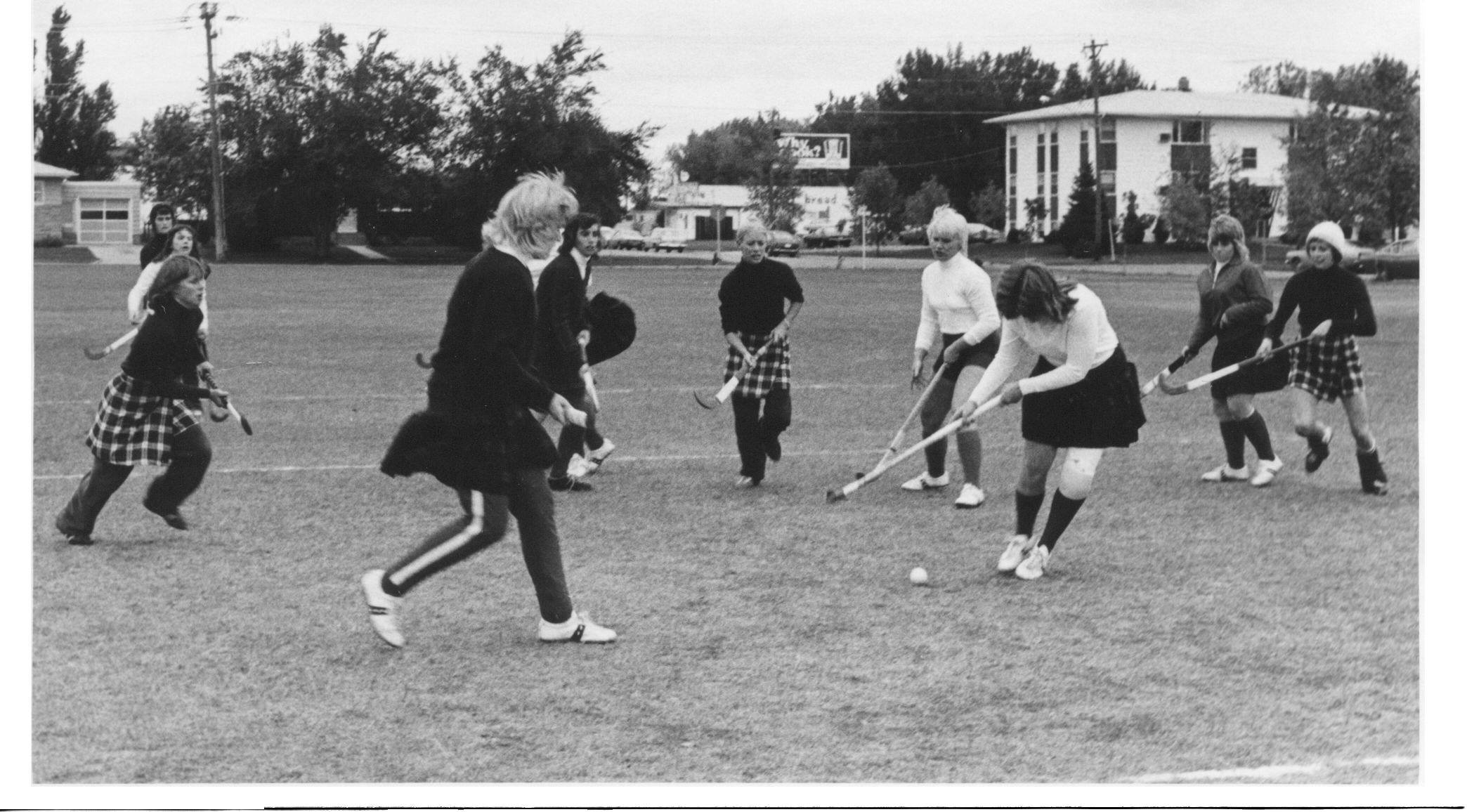

|
MSC students wait at the airport to meet US Senator John F. Kennedy, during his 1960 race for president. |
 Fall, 1960 -- the tradition of burning a giant M at homecoming will fade as the decade progresses. |
 Staffs of the MSC Mistic and Dragon yearbook held their traditional Christmas tea in December 1960. |
||||
 Mistic cartoon, October 1961. |
.jpg) Students leave lecture hall, ca. 1962. |
 Snarr Hall, opened in 1962. |
||||
 Don Pate, MSC football, league leader in touchdowns for 1963 season. |
 |
 Snow sculpture, honoring late President John F. Kennedy, early 1964. |
||||
 Snoopy snow sculpture, 1964 winter carnival. |
 In the 1960s, funding for women's sports at MSC was less than a third of that spent on men's sports. This was at that time common with all colleges in the nation. |
 Smoking was not prohibited on campus in the 1960s. |
||||
 Cartoon from 1962 Mistic. |
 Harry Marmion, Director of Field Services for MSC in the mid-1960s, was one of the faculty who doubted that US intervention in Vietnam would produce a peaceful settlement in Southeast Asia. Later the president of St. Xavier College (IL), he wrote two books on the military draft and volunteer army. |
 Construction of new Science and Industries building (Hagen Hall) nearing completion. |
||||
 Women's badminton, mid-1960s. |
Student newspaper ad, mid-1960s. |
 1966: Students enjoying the spring weather. |
||||
 The 1966 Dragon's wrestling team, coached by Bill Garland, posted a 14-3 record in one of their toughest schedules in their history. Pictured is Bob Billberg, who placed second in the national NCAA competition. |
 Even as the American troop levels grew, the average American knew almost nothing about Vietnam. Individual faculty lectures developed into study units, then into 'teach-ins' -- where opinions on the issue began to divide the campus. |
 1966 Yearbook reminder that it was not always Spring. |
||||
 The first student protest? In the fall of 1966, carrying signs reading "Pooie with Julie," MSC students DEMANDED that the Moorhead Theater run another movie after 53 weeks of "The Sound of Music." |
 MSC Mistic editorial, April 1967. |
 |
||||
 Dragon logo on the cover of the 1967 yearbook. |
 During Greek Week of 1967, fraternities and sororities participated in a tricycle race in which they exchanged clothes halfway through. The Delta Zetas were the victors. |
 1967: "Data Processing Systems" (computer) required punch card-data for math and astronomy students. The 'personal computer' was thus far little more than a gimmick in science fiction |
||||
 Students from Jordan and India dressed up for a 1967 fund-raising dance sponsored by the International Students Association. |
 1967: Popular music and changing style reflected influence of the counter-culture movement. |
 The era of Oxford shirts and A-line skirts gave way to blue jeans, cutoffs, and sweats. |
||||
 MSC hosted the 1968 Regional Theatre Conference (click image to read entire program). |
These stained glass windows honoring the dead of 1917-18 were removed from Weld Hall in the mid-1960s and placed in storage for nearly 25 years. The weekly convocations in the Weld auditorium was one more tradition that was soon to end. |
 Women of the 1967 modern dance club rehearse. |
||||
 "A Flea in Her Ear" Theater performance, 1968. |
 |

Guitars, and music, had developed into a potent tool for advocating social change. This photographs was taken in the late 1960s. |
||||
 1968 Alpha Phi rush. |
 Women's (only) dorm, 1968. Curfews and other restrictions still existed for most women on campus, but requests to drop these "archaic rules" grew each year. |
 1968 Bahá’í Ideals Group gathering. The Ideals Group, pursuing a universalist concept of faith, was established on the MSC campus in April 1967. |
||||
.jpg) April 1968 Mistic cartoon, noting President Lyndon Johnson's withdrawal from the 1968 election and Hubert Humphrey's subsequent candidacy. |
 1968: Young Democrats at MSC staged a rally for Eugene McCarthy. Much to the embarrassment of many Minnesota college administrators, a good many students and faculty (including President Neumaier) supported McCarthy, or Robert Kennedy, over Hubert Humphrey. |
 Fall, 1968: Project E-quality brought more minority students to the campus, and generated further tension. |
||||
 |
. 1969 MSC vs. Concordia. |

In the fall of 1969, several faculty members marched for peace on the Campus Mall, marking a turning point in the anti-war movement at MSC. |
||||
 By 1969, calls for voting rights for those who "could fight in a war" were growing (as in this MSC 1969 editorial). In 1970, an extension of the Voting Rights Act of 1965 gave the vote to those over 18. The 26th Amendment followed in 1971. |
 1969: a moratorium on classes for a "teach-in" on Vietnam. |
In April 1969, an argument over a pizza delivery in Snarr Hall led to this editorial. |
||||
 National Guard
troops at "Zip to Zap": Zap, ND, May
10, 1969. (read story of
Zip to Zap) National Guard
troops at "Zip to Zap": Zap, ND, May
10, 1969. (read story of
Zip to Zap) |
 Calming the waters --President Roland Dille planted a "Tree of Life" in October 1969, asking students to remember that "despite specific divisions, only in peace can we reach toward that vision of man that is affirmed by the great tradition of learning." |
|